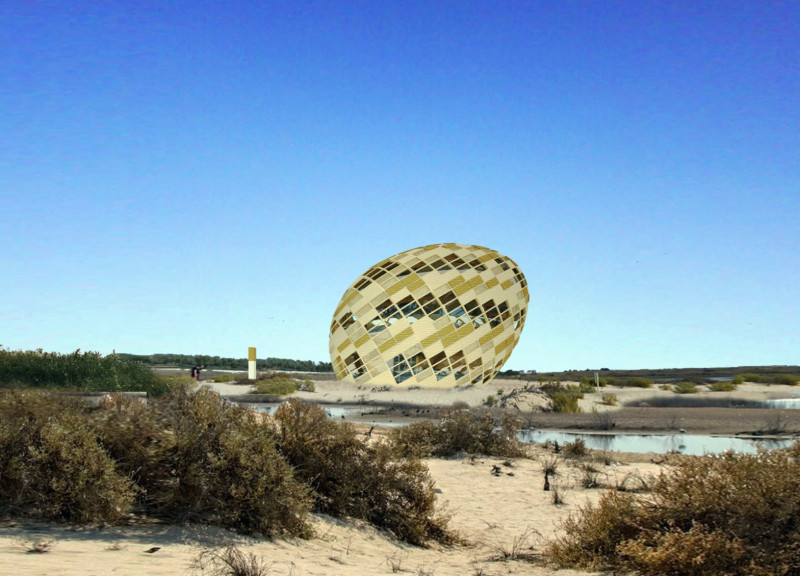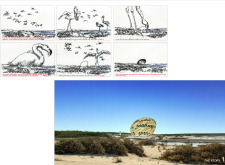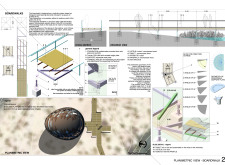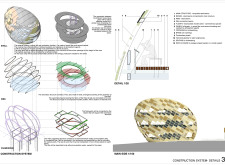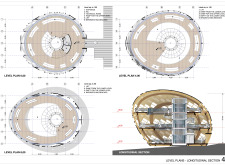5 key facts about this project
The design is a thoughtful integration of structure and landscape, located within a natural setting that enhances both its function and user experience. The focus is a modular boardwalk system that promotes accessibility while encouraging interaction with the surrounding environment. The concept emphasizes sustainability and adaptability, allowing the structure to work harmoniously with its site.
Modular Boardwalk System
Constructed with triangular steel bearing elements arranged in a square layout, the boardwalk offers a path width that meets accessibility standards. This modular setup allows for flexibility across different landscapes, making it easy to assemble on-site after prefabrication.
Access and Observation Features
Along the boardwalk, access platforms serve as resting areas where visitors can pause and engage with their surroundings. The entry to the bird observation tower has been designed to provide clear views of the habitat, which promotes wildlife observation and enhances the overall visitor experience. The thoughtfulness in the arrangement of sightlines creates a strong connection between users and nature.
Shell Design and Materiality
The external shell of the structure uses wood fiber and cement panels that protect against the sun. This choice of materials ensures good insulation and resistance to weather factors, which is important for durability. The modular shell includes perforations that align with the structural ribs, allowing natural light to enter while offering shelter from the elements.
Energy Efficiency and Accessibility
Photovoltaic panels are incorporated on the outer strip of the building, contributing to sustainable energy use. Access within the tower is facilitated by a helical stairway integrated into a central prefabricated steel core. An elevator can also be included to enhance accessibility, ensuring everyone can experience the observation space comfortably.
A notable detail in the design is how the perforated shell interacts with natural light, creating changing patterns within the interior throughout the day. This relationship fosters a deeper connection between visitors and the outdoor environment.


